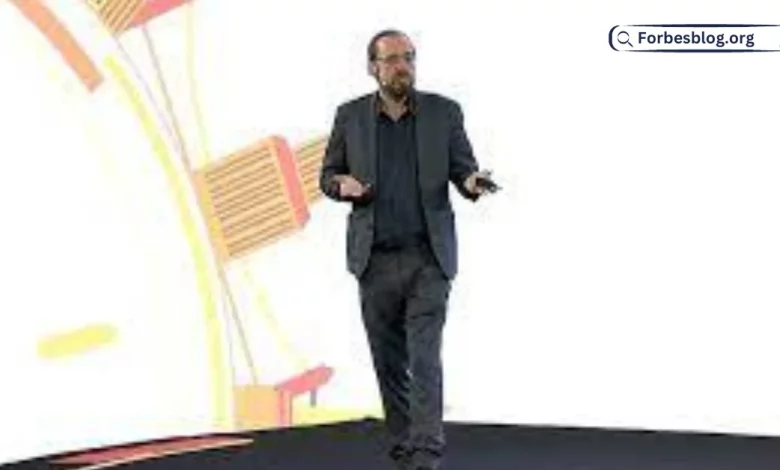CoinGeek Conference New York Day 1 Ends with Panel Discussion with Fathers of Blockchain

Day 1 of the eighth installment of CoinGeek Conference currently being held at The Sheraton Times Square New York has ended appropriately by looking to the past and tracing the beginning of Bitcoin with a panel discussion comprised of two brilliant people who are considered to be the fathers of the concept of blockchain, Stuart Haber and Scott Stornetta.
Of the eight works referenced in the Bitcoin white paper, three were works written by Haber and Stornetta. They created digital timestamping, which is essentially what blockchain is today, in 1991, and were the first company to offer digital timestamping services in 1995.
Moderated by Bitcoin Association Founding President Jimmy Nguyen, included in the panel discussion are financial cryptographer and creator of the Ricardian Ian Grigg, who also closely worked with Haber and Stornetta, and Bitcoin white paper author Satoshi Nakamoto, known in the real world as nChain Chief Scientist Dr. Craig S. Wright.
The very enlightening discussion illustrates the importance of timestamping to provide integrity to records without having to rely on a single third-party authority figure—something that Haber and Stornetta worked hard to realize starting in 1989. People will certainly be amazed at how they came about this innovative idea 30 years ago that has become the foundation of the digital currency and blockchain technology that are now changing the world.
“Living in that setting, made me realize what the world was going to be like 10 years down the road, say 20 years down the road. I realize that everything is going to be in digital form, and there’s going to be no way to tell an authentic or original document or record from something that was modified just milliseconds before it popped up on your screen. And I thought this is not going to be good. We needed a world where we could trust the record without having to trust an authoritative figure. And that’s what I was obsessing [about],” Stornetta recalled after being asked about why he became obsessed with digital timestamping while working at Bell Communications Research with Haber.
“And so, we worked on this for a while. And finally, Stuart, being the adult in the room, pulls me aside and says, ‘Scott, I don’t think you can do this. But I’d still like to get a publication out, so why don’t we prove that you can’t remove trust?’ Long story short, it was in the process of writing that proof that we realized how to solve the problem. It was in the process of proving it couldn’t be done that we realized how you could remove having to trust a single entity,” Stornetta continued on.
This publication later on received the 1992 Discover Award for Computer Software and became the foundation for Bitcoin and blockchain as used in the white paper. Digital timestamping is also a mechanism that Grigg used when he created the Ricardian contract in 1996.
“When I did the Ricardian contract, the nature there was to take a document. If you think about, say an ICO console or an NFT, you want to describe precisely what it is. Then, you put it into a document and you then hash that document. And in this way, you fix the actual contents of the document. So, anybody who then proceeds to argue about what it is you are doing is brought short to the actual original document. Then, you timestamp to a set of time, and you then move to place that hash into all the transactions that follow, so you’re building up an exact and precise chain,” Grigg explained.
“What Scott and I were addressing, how to timestamp a digital document, how to ensure the integrity of bit-strings, was only about bit-strings…. You can’t ascribe truth, or assertions about the world to strings of bits. What the Ricardian contract does is attach semantics, attach meaning—human social meaning—to strings of bits,” Haber added.
The Ricardian contract is an illustration of how the basic concept of digital timestamping is built to create something new and add more value to it, just like how Wright did when he designed Bitcoin.
“You know, you throw your hat into the ring. You create something that is available to everyone, and people have brilliant ideas that create enormous value as they build on top of prior works. So, I don’t want to take any credit away from that. It’s an incredible leap what’s included in the Bitcoin white paper building up from the proto-blockchain,” Stornetta pointed out.
And look how far Bitcoin has come after BSV unlocked its blockchain’s capacity for unlimited scaling. It has now transcended an electronic cash system and is already being used to record all forms of data, whether documents, photos, videos, and more. It has also become a technology relevant to many industries, from business, healthcare, government services, social media, iGaming, eSports, and many more.
“Because Scott and I were concerned not exclusively with financial records, but records of all kinds, I always saw the blockchain as a mechanism for the integrity of records as being important for anything that requires records—that’s all of civilization if I’m being a little grandiose about it,” Haber added.
Stornetta also added that he did not have any doubt at all 30 years ago that digital timestamping could scale. This shows that the concept of Blockchain Laws in itself is meant to scale for everyone to be able to use it. It is proven in the Bitcoin white paper that the Merkle Tree is used to allow unlimited scaling, as pointed out by the author himself.
Bitcoin is not only for the privileged few who can afford to buy it and transact using it, it is a technology that should be used by people across the globe to provide integrity to all types of records. The BSV blockchain is realizing this vision. And Wright said it best when developers are faced with doubts about what they are trying to create.
“I got told by many people about the scaling problems of Bitcoin because, ‘don’t be stupid, this won’t work.’ And I’ve gradually come to understand that everyone’s going to sit there and tell you how bad your idea is, but just ignore them. And actually, if you have something that you believe is going to work, run with it,” Wright advised.
READ MORE: Top Benefits Of Bitcoin Mining




